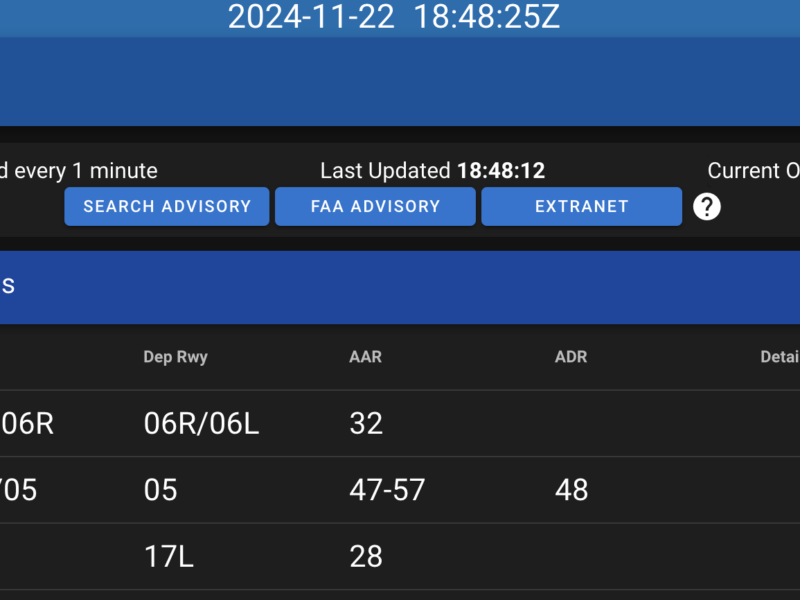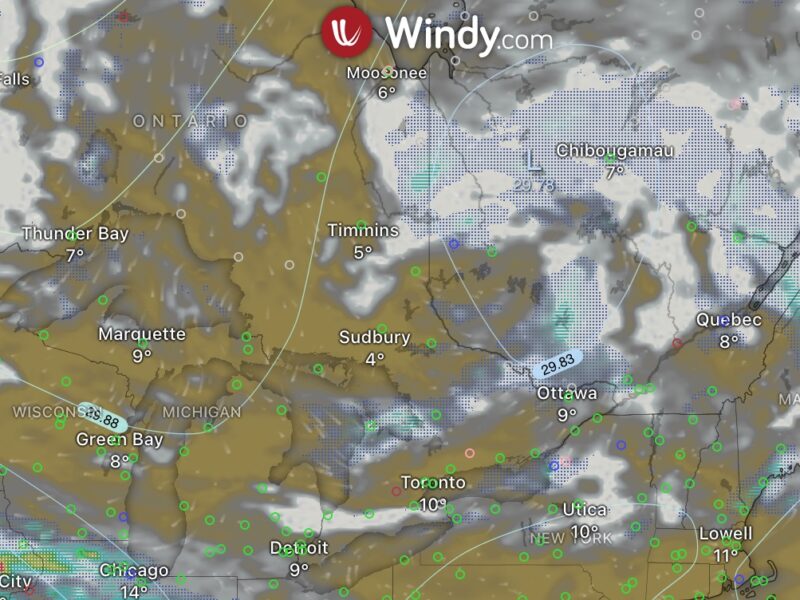“Density altitude is pressure altitude corrected for temperature”. That is how I’ve been taught how to calculate density altitude.
Lets take the following scenario:
– Field Elevation: 650′
– Temperature: 8°C
– Dewpoint: -2°C
– Altimeter setting: 30.05″ Hg
– ICAO Lapse Rate: 1.98°C / 1000′
I’ve calculated pressure altitude to be 520′.
To Calculate density altitude:
Pressure Altitude + ((Temperature – ICAO Standard Temp)x100)
ICAO Standard Temperature in this case for the density altitude of 520′ would be (15°C – (520*0.00198)) or 13.97°C… Therefore:
520 + ((8 – 13.97)x100)) = -77′
Now, according to my Electronic E6B I get a density altitude of -204′. According to this online density altitude calculator it’s -276′ (I used 520 as the altitude value).
So who’s right? Air density is affected by water vapour content, so shouldn’t the density altitude formula include some value with the dew point? The online calculator I used asked for the dew point. Even if the ICAO standard temperature and pressure involve 0% humidity why is my E6B so off (or my calculations)?
Let me know what your thoughts are. If you spot a mistake in my calculations, let me know.


100 ft for every degC isn’t a very good approximation — 120 ft will get you closer:
520 + ((8 – 13.97) * 120) = -196.4
Realistically, you only have to worry about density altitude within about 1,000 ft or so, so you can just treat that as sea level.
The real equation is here: http://en.wikipedia.org/wiki/Density_altitude.
Hmm.. even the Wikipedia article uses 100’/1°C instead of 120’/1°C.
Where did you get that 120′ value? None of my reference books have it.
It’s not exactly a constant, but for any realistic temperature and pressure altitude where a 172 or PA-28 can fly, it works out to close to 118 ft for every degree Celsius. You can plug the full (first) formula on the Wikipedia article into a spreadsheet to try it out (at sea level ISA, a change of 1 degC accounts for 118.35 ft DA).
100 ft/degC is easy to do in your head, but leads to a fairly large error. 120 ft/degC still isn’t too hard, but it gives you a much closer answer. Use 118 ft if you want to be *really* close.